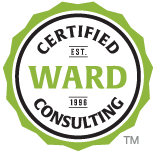As kids, we loved connecting the dots to reveal shapes and animals. As adults, we still love putting two and two together—even the six hours it takes to assemble IKEA furniture.
Is your presentation helping your audience understand the bigger picture or a jumbled mess.
Tip: Identify the central theme of your presentation. Does your content connect to make your point?
Put your presentation deck into Slide Sorter View.
Add transitions that relate to the storyline of your presentation.
When the dots connect, your message flows. Check this out:
For example:
Slide 1 – Intro: Welcome!
Slide 2 – Problem: I know you struggle with XYZ problem.
Slide 3 – Solution: Here is the answer to that challenge.
Slide 4 – Story: Let me tell you how I found that solution.
Slide 5 – How To: Here’s how you can, too.
Find your flow. Email me for some more presentation pointers.

